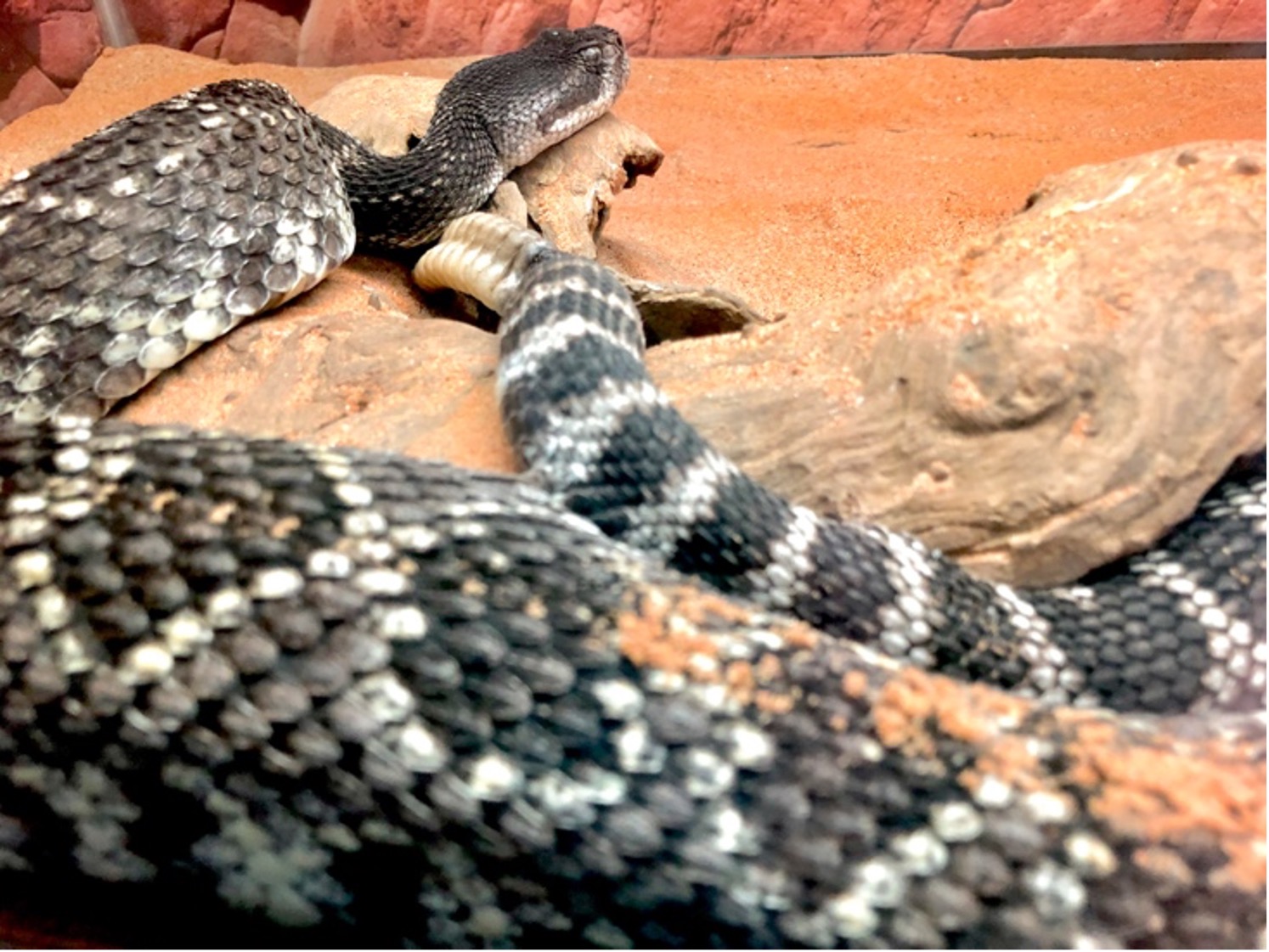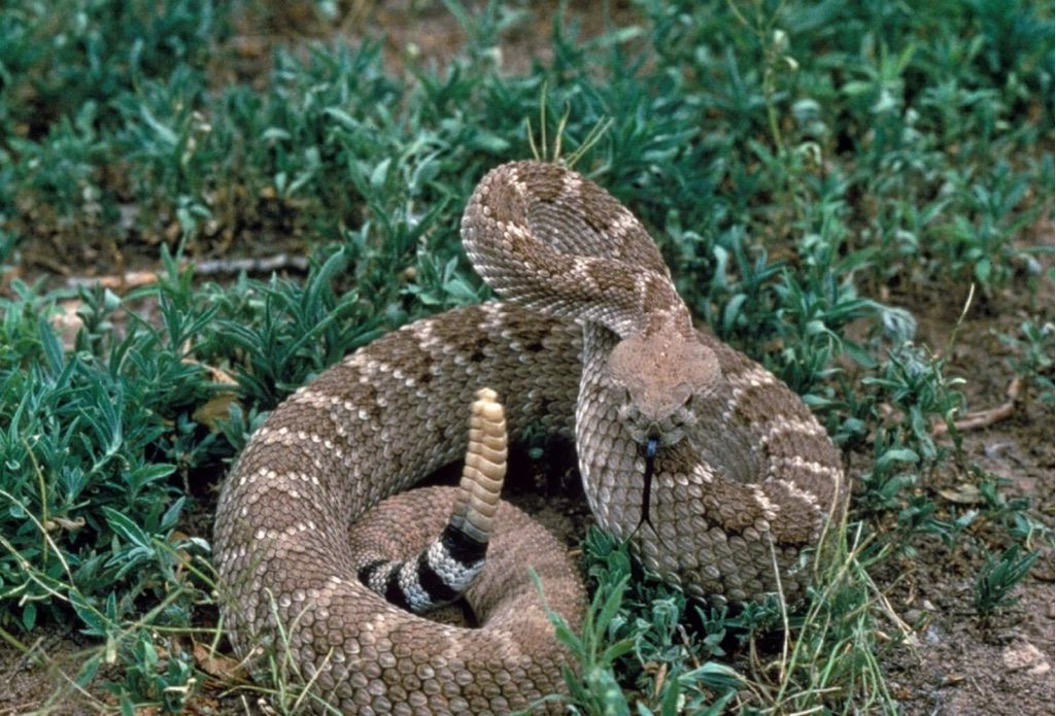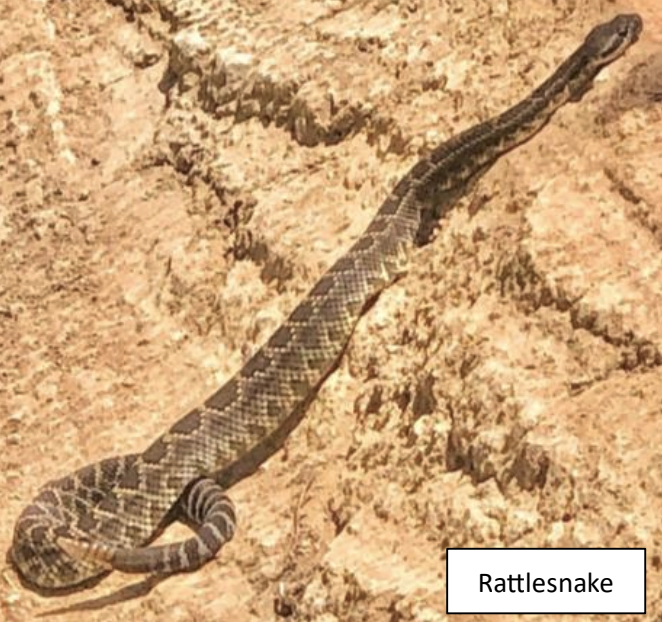


Southern Pacific Rattlesnake
Poisonous
Hefty body and stubby tail, a triangular-shaped head, hooded eyes and elliptical pupils has a small opening, or heat-sensing organ called a loreal pit, on each side of its face, between its nostrils and eyes, giving it membership in the subfamily called "pit vipers."
Fangs: Like all of its close kin, the southern Pacific rattler has paired fangs that unfold from the roof of its mouth, becoming fully extended as it strikes. Its fangs function much like hypodermic syringes, conducting venom from glands within the skull, behind the eyes, into a victim's tissues. If the snake loses fangs, it has developing fangs, in the same sheath, waiting in line to replace the originals.
It adds a new rattle with each molt. It may add several rattles within a year, and it may occasionally lose a rattle to breakage.
Has a good sense of smell and vision. Although deaf, it has the ability to detect vibrations in the ground. With its forked tongue and Jacobsen's organ (on the roof of its mouth), it can detect microscopic particles it uses to assess its surrounding environment and track prey. Using the heat-sensing organs on the sides of its face, even in total darkness, the snake can, according to the San Diego Zoo, detect nearby "prey that are as little 1/10 of a degree warmer than their background!"
Rattlesnakes eat only when they are hungry. If their last meal was large, adults can go two weeks between meals. Juveniles usually eat once a week. Young snakes feed mostly on small lizards, while adults usually eat birds, lizards, snakes, frogs, insects, and small mammals, including mice, rats, rabbits, hares, and ground squirrels.
Adult California Ground Squirrels are immune to rattlesnake venom and will intensely confront any snake they feel to be a threat. Rattlesnakes usually are nocturnal hunters.

Listen to a Rattlesnake Rattle!
